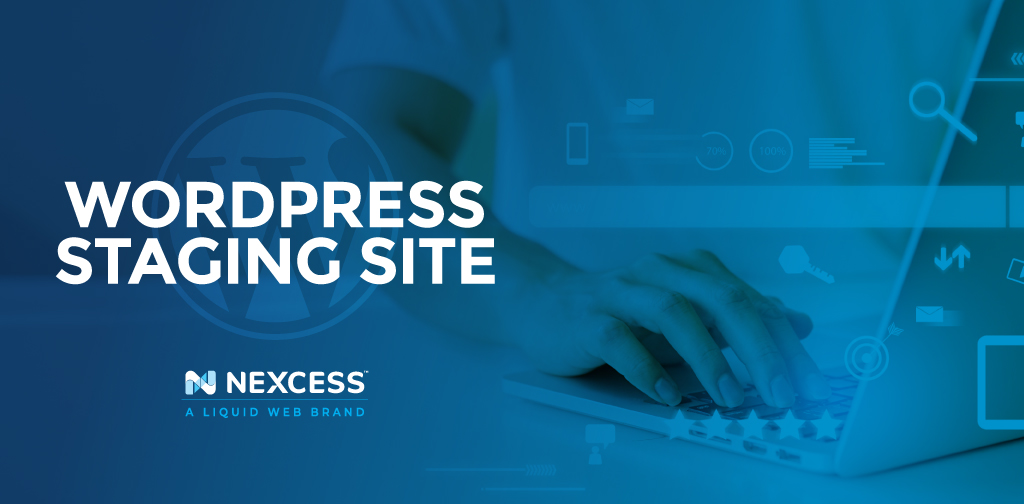Your worst fear comes true. You make a small change to your website, like updating a plugin, and your entire site crashes.
When you ask for help, the first thing someone asks is, “Did you test the change on your staging site first?”
Wait, what is a WordPress staging site?
A WordPress staging site is a test environment where you can change your website without impacting the live website. Staging sites help prevent catastrophic website crashes by allowing you to preview changes before making them live.
In this post on WordPress staging environments, you’ll learn:
- When to use a WordPress staging site.
- Benefits of a WordPress staging site.
- How to set up WordPress staging.
What is a WordPress Staging Site?
A WordPress staging site is a replica of your live website that you can use to test any changes before making them visible to the public.
Typical WordPress development workflow includes three versions of your website:
- Dev or Development. Developers often test changes by setting up a copy of WordPress on their computers, then pushing the changes from their local development environment to the live site.
- Staging. This is a test version on your site. Unlike a development environment, staging sites run on your actual web server, making it easier to test changes to dynamic elements that require a live server.
- Production. This is the live version of your website that visitors see.
If you’re just getting started with WordPress, you don’t need to mess with setting up a local development environment. A staging site provides all the testing functionality you’ll need.
When syncing between staging sites and production sites, you’ll see the terms push and pull used. You push changes from stage to production. If you want to start working on new changes, you’ll pull the current version of your site from production to stage.
This process ensures that any edits someone made on the live site sync to the staging site. Otherwise, you could write over those changes the next time you push to production.
When to Use a WordPress Staging Environment
As a best practice, use a staging site for any change you’d like to make to your website. Make the change on the staging site first and then push it to your live site.
Not everyone follows this best practice, especially for minor copy edits. That’s why we recommend syncing your live site to your staging site before beginning any work.
Reasons to use a WordPress staging site include:
- Installing New Plugins or Themes. Plugins and themes impact the layout and functionality of your site. Installing them on your staging site allows you to check to see how the new theme or plugin will affect your site.
- Updating Core System, Themes, or Plugins. Updates to your WordPress core system or themes or plugins have the potential to affect your site’s appearance or function. Test the updates first on a staging site.
- Adding or Modifying Custom Code. Custom modifications to your site’s code can crash or slow down your WordPress site. The staging site gives you a safe place to test the alterations before pushing them to the live site.
Benefits of Using a WordPress Staging Site
The most obvious benefit of using a WordPress staging site is to prevent crashing your live site. In today’s digital-first world, websites provide the majority of many businesses’ sales or leads. In addition to the technical headache, crashing your website negatively affects your bottom line.
Another benefit of using a WordPress staging site is it allows you to test new designs and layouts. You can try different versions of new designs before selecting the one you like best.
If you’re still new to WordPress, a staging site also offers a safe place to learn and try new things in the system. If you mess something up, you can always download a clean version of your live production site.
For freelance web developers, a staging site allows you to complete an update and get client approval before making it live.
How to Setup a WordPress Staging Site
Setting up a WordPress staging site is surprisingly simple when you have the right tools.
Three methods of setting up a WordPress staging site:
1. Web Host Staging. Top-quality managed WordPress hosting will often include a staging site. Setting up your staging site and syncing between stage and production only requires clicking a button. This is the best option for WordPress beginners.
2. WordPress Staging Plugin. If your host doesn’t offer a staging environment, you can use a plugin like WP Staging. Plugins work similarly to the functionality provided by good web hosts.
3. Manual Staging Sites. If all else fails, you can create a copy of your website on a subdomain and migrate the site manually or with a site migration plugin. Check out our guide on switching web hosts for more details about how site migration works. This option is tedious and why we recommend selecting a host with one-click staging.
Easy WordPress Staging Sites from Nexcess
At Nexcess, all of our managed WordPress hosting plans include one-click staging environments.
We understand your focus is on building your business. You don’t have time to troubleshoot website crashes. Not only can you quickly set up a staging site with our hosting plans, each plan includes automatic updates with visual comparison.
When your site updates or installs new plugins, our system scans your site to show you any changes, so you can correct them right away if something goes wrong.
Sign up today and experience the difference in premium hosting designed for WordPress sites.

